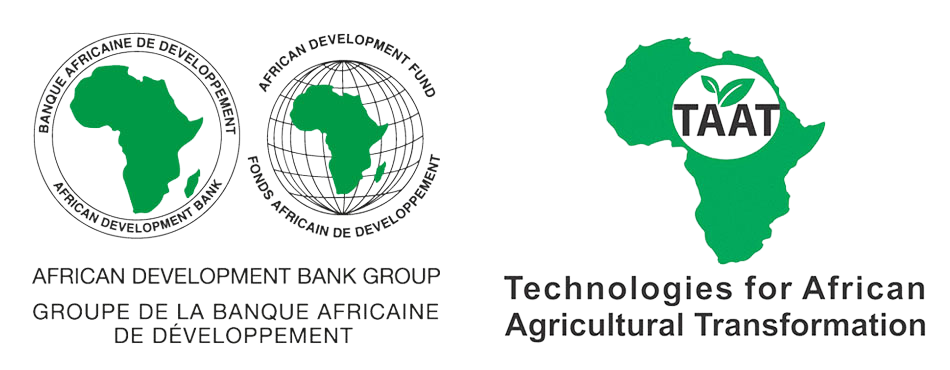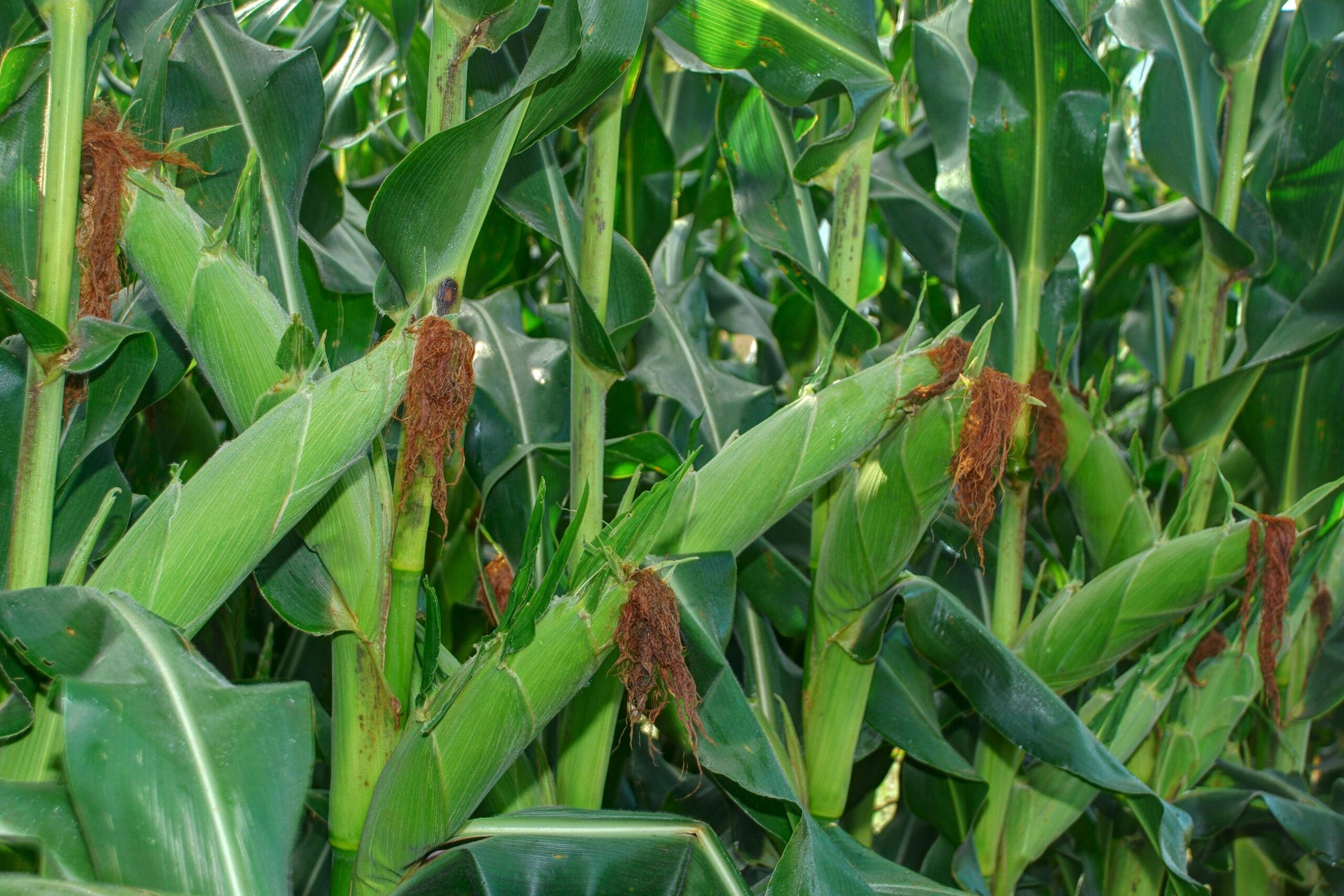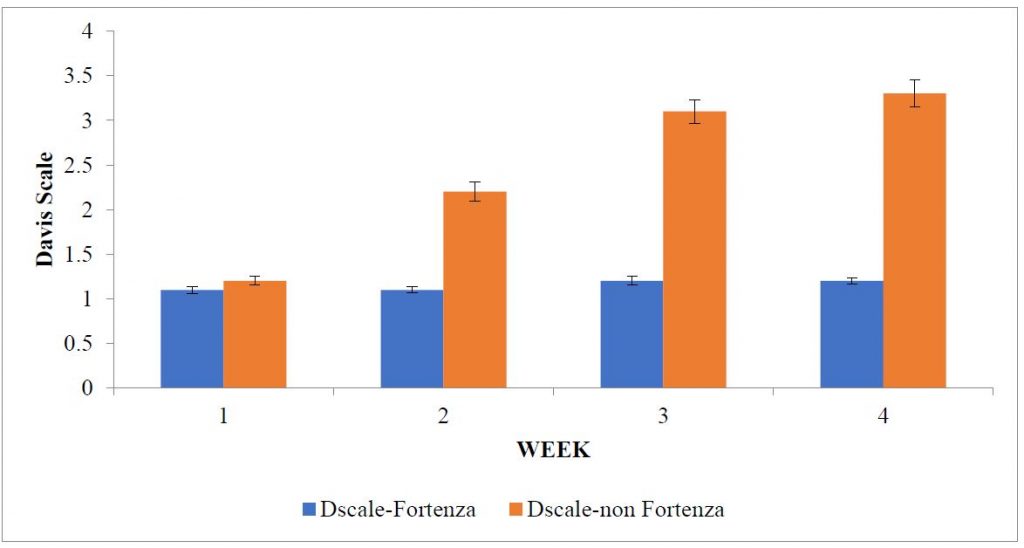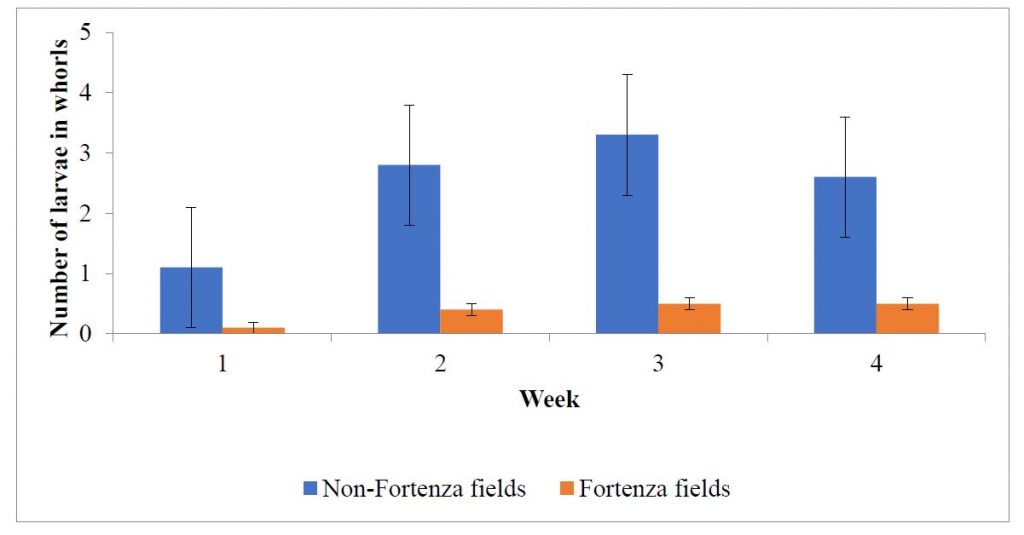Farmers expect bumper harvest as TAAT Maize technologies tackle Fall Armyworm

When the first case of Fall Armyworm (FAW) was reported in Africa in 2016, there was panic among farmers across Africa.
Farmers watched in disbelief as the destructive caterpillars native to the Americas, caused havoc as they fed on their maize crops. Farmers lost between 50-100% of their maize yields, which impacted on their social and economic wellbeing.
Numerous efforts to control FAW were rendered fruitless as the voracious pest continued to thrive in farmers’ fields..
Mr. Basirio Mumbi, a farmer in Mpongwe District, Zambia, was not spared. As the pest population increased rapidly, he felt helpless as he had no effective control mechanism.
‘It is very expensive to depend on Pesticides alone,’ he said. This sentiment was echoed by farmers in other Districts.
This sense of despair was about to change. The tireless and urgent efforts by researchers to get a solution for farmers had borne fruit. The challenge was how to get the technologies to farmers.
Successful technology deployment to farmers
The Maize Compact of the Technologies for African Agricultural Transformation (TAAT) that is led by the African Agricultural Technology Foundation (AATF) worked with partners to find a solution to getting the FAW control technologies to farmers.
Collaboration between the TAAT Maize Compact and the TAAT FAW Enabler Compact led by International Institute of Tropical Agriculture (IITA) facilitated access and deployment of over 36,000 liters of Fortenza Duo (FD) seed treatment to seed companies.
Fortenza Duo is a systemic treatment that offers protection to maize crops against FAW up to 4 weeks after germination, which is usually the most critical stage in maize growth. This technology also ensures use of chemical sprays by farmers is kept to a minimum which translates to lower cost of production.
The companies used 17,440 liters of the FD to treat over 3,007 tons of 40 climate smart maize varieties in Zambia and Zimbabwe. These seeds were deployed to more than 300,000 farmers in these countries, among them Mr. Basirio Mumbi.
Funded by the African Development Bank (AfDB), TAAT’s main objective is to improve the business of agriculture across Africa by raising agricultural productivity, mitigating risks and promoting diversification and processing in 18 agricultural value chains within eight Priority Intervention Areas (PIA).
The programme increases agricultural productivity through the deployment of proven and high-performance agricultural technologies at scale along selected value chains including maize.
To assess results of FD seed treatment and ascertain its performance, the TAAT Maize Compact used statistically acceptable parameters. Based on the Davis Scale, the assessment focused on FAW damage, number of plants with infested whorls, number of plants with fresh window panes and the number of FAW larvae in whorls.
The assessment covered farmer fields in Zambia and Zimbabwe where FD treated seeds were used compared with where non-FD treated seeds were planted.
Cleaner maize fields
Results from 4-weeks of continuous FD monitoring missions indicated that FD treated fields had good crop stand as compared to the non-FD treated. The fields had insignificant to no FAW damaged foliar (Davis Scale 1 – Fig. 1), fewer number of FAW larvae, lower number of plants with fresh windowpanes and infected whorls.
Basirio Mumbi was one of the farmers who attested to the effectiveness of the FD treatment. He called on the government and seed stakeholders to ensure sustainable availability of the FD seed treatment to benefit more farmers saying, ‘My fields are better than others which have Non-Fortenza Duo seed’.
Enhancing maize production systems
The first 4 weeks of maize seedling are critical as they determine the eventual grain yields expected by a farmer. The FD treated maize seed is protected for up to 4 weeks after germination, meaning that with proper farm management, it provides better chances of the farmer reaping higher yields.
Harvest is due end May 2019, and the indicative parameters, that include good crop stand, ear formation and grain size show that the farmers who planted FD treated seed will realise increased yields. It is anticipated that the over 300,000 farmers will be able to sell their surplus production, and keep the rest for food, hence, beginning the journey of transforming their maize production systems.
Incorporating a sustainable private-sector led spraying service for effective management of Fall Armyworm in maize fields
FAW has contributed to huge losses in maize production among smallholder farmers in Sub Saharan Africa. Research and farmers indigenous knowledge have demonstrated that for effective control of the damages caused by the FAW, adoption of Integrated Pest Management strategies (IPM) is key.
Initiative
It is against this background that the TAAT Maize Compact, with facilitation from the African Development Bank in collaboration with Corteva Agriscience, a member of Crop life International Association, deployed “Delegate” insecticide to be used in the control of FAW 4 weeks after germination.
During this time, the effectiveness of FD treatment is minimal.
Ideally, only 2 sprays of delegate are needed after the fourth week to control FAW infestation up to harvest. However in highly infested areas the number of sprays can be increased to 3.
The Maize compact has tapped into the Crop life existing platform which exits in over 80 countries, to enhance training farmers and agricultural workers in the responsible and effective use of crop protection products.
The Compact will enhance its work with youth groups affiliated to the National Union of Farmers in Zambia, to expand coverage
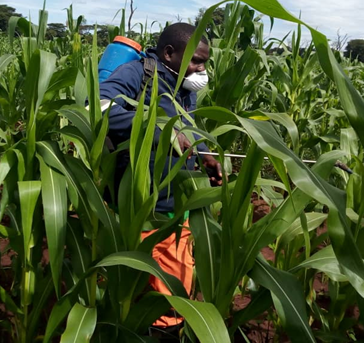
and reach of farmers with this toolkit.
The TAAT maize compact in partnership with Corteva Agriscience recruited four youths, who were trained in provision of spraying and stewardship services among maize farms in Zambia.
With support from the agricultural officers, the youths were able to spray the maize fields twice for the November 2018 season in 2 districts of Zambia, namely, Chongwe & Mpongwe, after the 4 weeks of FD had elapsed (Fig. 2).
Key results/achievements
Currently, harvest is expected in May 2019, but initial presentation of the plants illustrated that fields with Fortenza Duo + Delegate had much less infestation of FAW than Fortenza Duo + Non-Delegate fields. Farmers were very receptive of this idea and efforts, and requested this service be made available to help more.
The advantage of working with private sector Crop Life program ensures access to select quality products, stewardship package from the partner companies and training, monitoring and registration of the participating youths.
The Project will further connect the trained youth SSPs with Agrovet outlets and farmer groups in the maize value chain.
Impact
Apart from effectively helping smallholder farmers to control on FAW damage on their maize plants, the initiative also exposed youths to a business model that they could tap into and be involved in the maize value chain to improve their livelihoods while transforming farming in their communities.
Lesson learnt
It is apparent that numerous technologies are available for Small-Scale farmers in Africa. The main challenge is the sustainable access of these technologies by farmers.
Efforts to facilitate linkages and ensuring technology transfer with the private sector are key to ensure farmers adopt and use these technologies correctly and consistently. Government buy-in and support is important for any major progress to be made.
Hence, the TAAT Maize is working with NARS and National Commodity associations to ensure sustainable implementation of activities.
